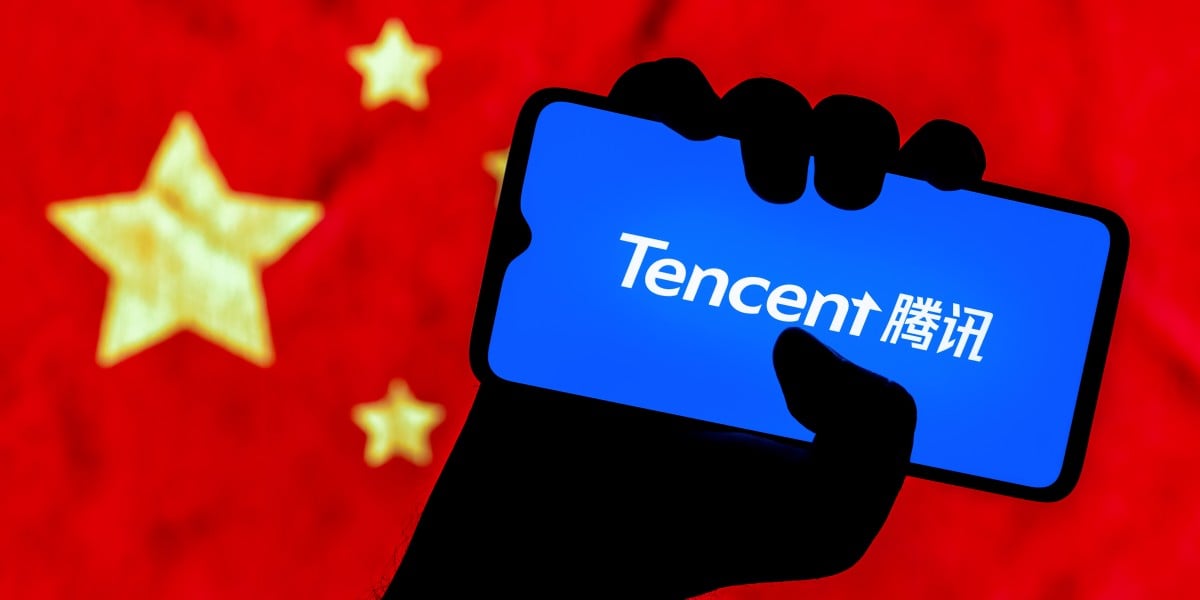Tencent Just Brutally Ditched Nvidia and AMD – And It’s Game Over for American GPUs
Hello everyone. Gather ‘round, because Tencent just casually dropped the digital equivalent of telling Nvidia and AMD, “Thanks for the memories, but we’ve moved on.” It’s the kind of cold, cynical corporate maneuver that screams: “We’ll take your billions in hardware when convenient, but don’t flatter yourselves into thinking we’re dependent.” And it burns, folks – not just for the GPU giants, but for every investor who thought they were about to ride an unstoppable AI-fueled gravy train straight into retirement. Spoiler: Tencent has no interest in being your cash cow.
Tencent’s GPU Mic Drop
Let’s get right to the meat: during their Q2 earnings call, Tencent president Martin Lau basically said, “GPU restrictions from the U.S.? Meh, doesn’t matter. We’ve already got enough chips to fuel and upgrade our models.” Read that again. The man just admitted stockpiling silicon like an MMO hoarder sitting on 12 expired XP boosts, and now he doesn’t care if Washington doles out vendor tokens or not. For a company addicted to profit margins, that’s the ultimate power flex.
Tencent is not just shrugging off future GPU access, either. They’re talking up software optimization, driving efficiency, squeezing every ounce out of what they already have. It’s the same vibe as a gamer who’s figured out how to get Doom Eternal running on a toaster – and Tencent seems pretty happy running high-stakes AI workloads on metaphorical kitchen appliances if it means dodging U.S. dependency.
Four Reasons Americans Should Feel the Burn
- Nvidia and AMD just lost a customer segment. If Tencent, one of the largest entities on the planet, isn’t buying, then that post-restriction gold rush Wall Street was foaming over suddenly looks like a mirage in the desert.
- U.S. policy isn’t cashing in. The American administration probably imagined some sweet tariff cut when GPU shipments fired up again. Joke’s on them – Tencent independently stocked up before the gates even reopened.
- Tencent has alternatives. Lau flat-out hinted they can grab inferencing chips from “other sources.” Translation: Sorry Uncle Sam, you’re not the only shop in town.
- Long-term slowdown incoming. Optimization means fewer hardware purchases over time. In other words, Tencent is playing the efficiency card – the kind of endgame gear strategy every gamer knows frustrates the loot vendors.
The Investor Buzzkill
But it gets better – or worse, depending on whether you bought AI stocks high and hoped to cash out during “the boom.” Tencent admitted depreciation costs from AI are rising faster than the returns they’re seeing. Translation: this AI thing is expensive, the balance sheet isn’t exactly in harmony, and no, you can’t blame lag spikes.
Tencent’s solution? Diversify away from GPU-reliant projects. Put more into CPUs. Expand databases. Do everything except bend the knee to American silicon dealers. It’s the corporate equivalent of uninstalling Battle.net after Blizzard announces another round of predatory monetization while claiming “you have your fun, we’ll have ours.”
A Pattern of “We Don’t Need It”
This isn’t a one-off statement either. Tencent has now told investors three quarters in a row that they don’t actually need more GPUs. That’s right: three times. At this point, they’re just grinding salt into the wounds of hardware execs who thought they had a guaranteed bestseller. It’s like watching a boss fight where the final phase is just your loot dropping into a black hole.
The Bigger Picture
Let’s pull the stethoscope out for a second. From a medical perspective, Tencent’s comments are basically a slow, steady arrhythmia in the heartbeat of the GPU market. Investors expected tachycardia-level excitement post-export ban lift. Instead, they’re staring at an EKG that flatlines into “good luck finding customers who actually want to keep buying.” That’s the diagnosis: chronic GPU-revenue anemia, brought to you by Tencent’s software vitamin supplements.
Meanwhile, Tencent is still financially healthy. Q2 revenue hit $25.7 billion, profit at $9 billion, WeChat users at 1.41 billion. Translation: they’ve got the money, they’ve got the market presence, and they have zero incentive to crawl back to Nvidia with an apology bouquet. If anything, they’re building immunity against future hardware shortages – a perfectly good corporate immune system defending against American “policy viruses.” Conspiracy theorists, take note – this isn’t just market strategy, it’s digital geopolitics hidden in plain sight.
Conclusion: A Cold GPU Reality
So what’s the grand takeaway? Tencent doesn’t need your GPUs, America. They stockpiled, optimized, diversified, and moved on. Investors who expected AI hardware to endlessly print money just got another serving of reality checks. Meanwhile, Tencent is calmly marching forward with double-digit growth while essentially ghosting some of the biggest chip manufacturers in the world. It’s ruthless, efficient, and – depending on where you stand – either brutally impressive or deeply concerning.
Tencent came out of this earnings call stronger, colder, and just a bit smugger. And Nvidia and AMD? Well, they’ll just have to find someone else to carry their loot. Because Tencent’s not playing ball anymore.
And that, ladies and gentlemen, is entirely my opinion.
Article source: Tencent doesn’t care if it can buy American GPUs again – it already has all the chips it needs, https://www.theregister.com/2025/08/15/tencent_q2_2025/



